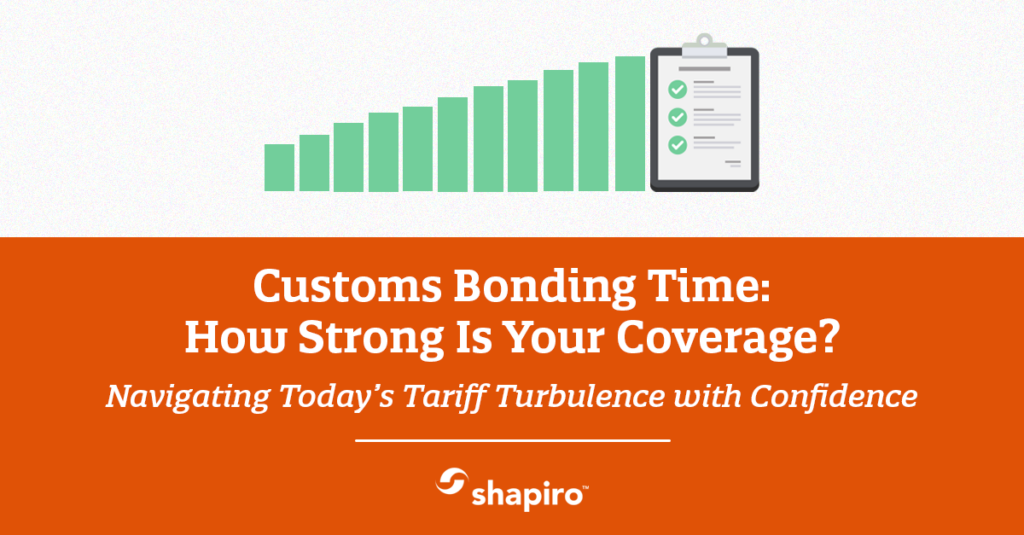Customs Bonding Time: How Strong Is Your Coverage?

Let’s be real—customs bonds probably aren’t dominating your weekend barbecue conversations. But if you’re in the business of international shipping and logistics, especially in today’s tariff-happy trade climate, your bond isn’t just a formality, it’s a critical part of your import strategy.
Understanding the strength (and limits) of your customs bond could be the difference between smooth sailing and a costly supply chain snafu.
What Is a Customs Bond, Really? (And Why Should You Care?)
Think of your customs bond like a backstage pass to the import world. It’s a financial guarantee to U.S. Customs and Border Protection (CBP) that duties, taxes, and fees will get paid—even if things go sideways. No bond, no entry. And if your bond’s too small? Delays, denials, and expensive detours could be in your future.
When Tariffs Rise, So Should Your Customs Bond Awareness
Tariffs have been sprouting like weeds since the Trump-era trade shifts—and each spike in duty liability puts new pressure on your bond limits. If your coverage isn’t keeping pace, you might receive a “bond insufficiency” notice from CBP (which is the compliance world’s equivalent of a nasty parking ticket).
The good news? Right now, there’s a 90-day pause on reciprocal tariffs from most countries (sorry, Chinese importers, still no relief there). This is your chance to proactively review your bond before things heat up again.
Stronger Bonds = Stronger Compliance
High tariffs don’t just impact your margins—they attract more CBP attention. That makes cutting corners risky business. Misclassifying goods, misstating values, or downplaying country of origin may seem like shortcuts, but they come with serious consequences. A well-structured customs bond helps keep your trade practices clean and accountable, while shielding your operation from the fallout of non-compliance.
Continuous Bonds Aren’t Forever—But Their Risk Can Linger
Here’s where things get interesting: continuous bonds automatically renew each year but carry liabilities that hang around until all entries from the bond year are liquidated (typically within 314 days). It’s not exactly a “forever” situation, but it’s long enough to leave you exposed if you’re not watching the calendar. Understanding this timeline gives you better control over your customs risk—and helps avoid surprises.
Stacking Exposure: The Double-Dip You Don’t Want
When a bond renews before previous entries liquidate, you’re looking at “stacking exposure”—a risk-layer cake that no one ordered. This means you’re potentially liable under multiple customs bond periods at once, which could trigger the need for additional collateral. Pro tip: securing a slightly higher bond from the outset can often be more cost-effective than having your cash tied up post-renewal.
Time to Strengthen the Bond
Managing your customs bond shouldn’t feel like decoding a spy thriller. That’s where Shapiro’s compliance specialists come in. We’re here to help you build a stronger bond—one that keeps you covered, compliant, and confidently on course through the complexities of CBP regulations and shifting tariffs.
Ready to reinforce your customs bond and protect your supply chain?
Let’s talk today: [email protected].
